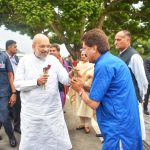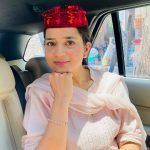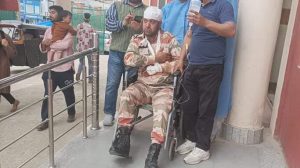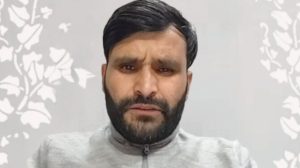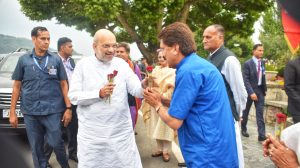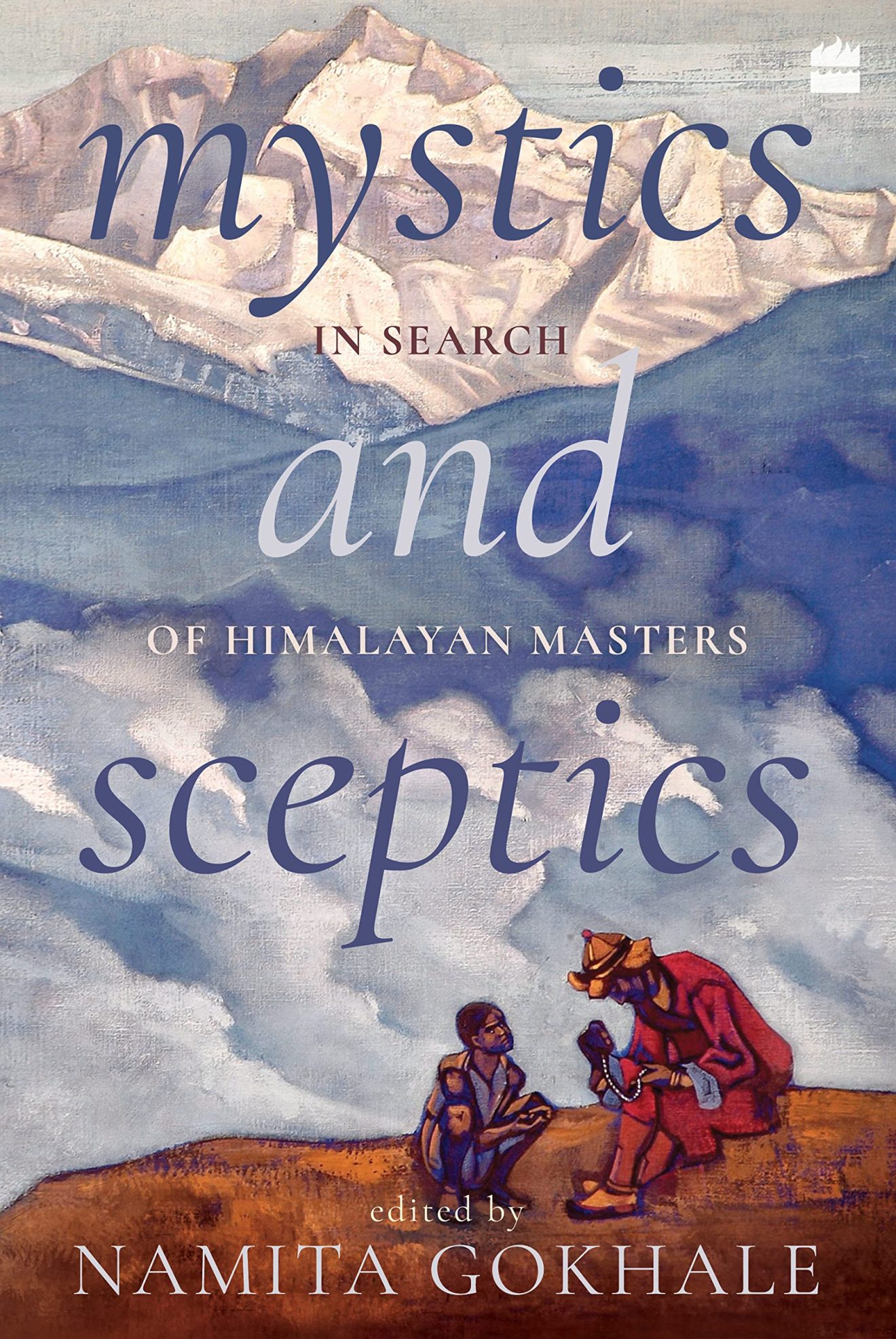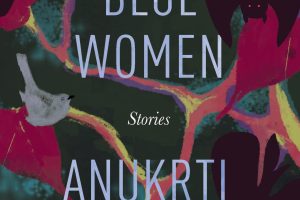The book “Mystics and Sceptics: In Search of Himalayan Masters” has been edited by Namita Gokhale. This uniquely insightful anthology traverses the sacred geography of the Himalayan range, encompassing different cultures and religious traditions in its living legacy. Through myth, legend and anecdotal memory, it includes narratives of wanderers and seekers, gurus and enlightened souls, tricksters and delusionists. The stories herein are as varied as the flora and fauna of the mountains. Some of them display the resilient scepticism that is the foundation of true belief; others take a leap of faith. There are encounters and quests, wanderings and lost paths, disappointments and betrayals, but they carry the spirit of the seeker, of the search and the continuing journey within them. This book is a tribute to the mysteries of the Himalaya and the mystic secrets it contains.
Read an excerpt from the book here.
Guru Gobind Singh makes a reference to the mountains in his autobiographical composition, Bachittar Natak. He says that he was meditating on the Supreme Creator in his past lives deep in the mountains when he asked by the True Lord to come to the earth and address the evils of the age:
Ab mai apni katha bakhano. Tap sadhat jih bidh muh aano
Hemkunt parbat hai jahan. Sapat sring sobhit hai tahan
(Now I relate my own story. I was brought here while I was absorbed in deep meditation
Where stands the Hemkunt mountain, marked by seven peaks)
The tenth Guru of the Sikhs also spent about four years at Paonta Sahib on the banks of the Yamuna, in the shadow of the Siwalik Range, the foothills of the Himalaya.
Before he went there, the young Guru had spent his early years at Anandpur Sahib. These were years of preparation—both martial and spiritual. Under the inspiring leadership of the young and handsome leader, Anandpur Sahib turned into the birthplace of a new nation. It began to see martial exercises and sports—horse racing, musket shooting, archery and swordsmanship. A huge war drum, known as the Ranjit Nagara, was built and installed; its booming beat announced a hunt or mealtime in the communal kitchen. At the same time, the guru, with his amazing talents, concentrated on literary and spiritual acquisitions. He learned Persian, Arabic, Sanskrit, Braj and Awadhi, and studied the ancient classics and texts. His poetic genius was to result in a cornucopia of highly accomplished literary work.
The Guru’s growing influence among the people was watched with consternation by the Rajput rajas of the surrounding hills. These rajas were used as puppets by the Mughal Emperor Aurangzeb and were also given to internal rivalries. It was not just the splendour of Guru Gobind Singh’s court that disturbed them but also the casteless nature of the community that he was nurturing, which they saw as a challenge to their time-honoured feudal systems. They also saw the Guru’s education, martial training and patronage of the arts as attempts to equate himself with the Rajput rulers.
The first challenge to the Guru came from Raja Bhim Chand of Bilaspur (or Kahlur), in whose territory Anandpur fell. He demanded that the Guru hand over a richly embroidered canopy and a well-trained elephant. When rebuffed, he had to be persuaded by his fellow rajas not to go to war with the Guru; the truce, however, would prove to be temporary.
Raja Medini Prakash of Sirmur, though, was of a different bent of mind and looked towards the Guru for support, fearing that a marital alliance between two other Rajas—Bhim Chand of Kahlur and Fateh Shah of Garhwal—could threaten his kingdom. He made repeated overtures and extended an invitation to the Guru to visit him. Finally, in 1685, Guru Gobind Singh accepted his invitation and set out with 500 soldiers towards Nahan, the picturesque capital of the Sirmur state in the Siwalik Hills. He was warmly received and spent several days in discourse and in hunting game in the surrounding jungles; he is also known to have single-handedly taken on a man-eating white tiger that had spread dread in the population.
The Guru’s presence also attracted Raja Fateh Shah of Garhwal, who came to pay his respects. A peace treaty was worked out between Nahan and Garhwal. Medni Prakash was delighted with the Guru’s presence in his territory and believed that his kingdom had found its best days. He pleaded with Guru Gobind Singh not to leave. The Guru himself was charmed with the beauty of the mountains, the valley that spread below Nahan to the boisterous Yamuna river where it flows out of the hills. While riding in the area, he reached a spot where his horse came to a halt and would not move any further. Seeing it as a sign and captivated by the beauty of the surroundings, the Guru decided that he would make his camp at the stop where his horse had planted its foot, or ‘pau’. That place would be known as Paonta. A small fortress came up quickly and the settlement began to grow. Today, a serene gurudwara stands there as the centre of a thriving town on the banks of the river.
The years at Paonta Sahib were to be the most creative of the Guru’s life. He devoted himself to his favourite outdoor activities with his followers and contemplated deeply on the state of the nation and the challenge of reviving the human spirit. He also produced supremely sublime poetry in praise of the Almighty. A number of poets from all over the country—his poetic court included fifty-two—gathered about him, and their creative activity turned Paonta into a cultural and spiritual centre. Sikh lore has it that one day the poets complained to Guru Gobind Singh that the noisy river disturbed their concentration and it is in accordance with the Guru’s command that the Yamuna flows soundlessly past that point to this day.
The huge amount of literature produced at Paonta, along with translations of ancient Sanskrit texts—including the Mahabharata, the Puranas and the Niti Shastra—into Punjabi and Braj were compiled into a massive anthology called Vidyasagar. This huge exercise had a purpose: to bring about a renaissance of ancient knowledge and thus facilitate a spiritual awakening by making the people aware of a heritage they could be proud of. For this it was necessary to take these texts from the selfserving possession of the priests and render them comprehensible to the masses through translation. Unfortunately, this valuable compilation itself was lost during the crossing of the Sirsa river in flood after the evacuation of Anandpur some years later; some of the translations survived through copies made outside the Vidyasagar collection.
But the tranquil spiritual life at Paonta was soon brought to an end. Bhim Chand Kahluria was still determined to challenge the Guru. While visiting Srinagar in Garhwal for the ostensible reason of the marriage of his son, he forced Raja Fateh Shah to join him, along with the other hill rulers, in a conspiracy to attack the Guru. A huge army set out towards Paonta. The Guru’s army faced them on the battlefield of Bhangani, six miles from Paonta, on 22 September 1688.
Guru Gobind Singh suffered an early setback when five hundred Pathans who had been commended to his army by a Muslim divine and follower, Pir Buddhu Shah of Sadhaura, broke their loyalty and went over to the hill rajas. But Buddhu Shah himself joined the Guru with his four sons and seven hundred followers. The Guru’s followers, though not professional soldiers, fought with tremendous spirit and resolute determination. The hill rajas and the battle-hardened Pathans were amazed at the spirit that had been instilled into ordinary farmers, workers and shopkeepers, many of whom had never picked up a weapon before. A description of the battle, including the names of the brave warriors, is given in Bachittar Natak in the Guru’s own words. On the death of Sango Shah, his commander-in-chief and first cousin, the Guru himself took the field and confronted the brave hill chief and ace marksman Hari Chand Handuria. He allowed Hari Chand to fire three arrows at him, the third of which pierced the Guru’s belt but did not hurt him. He then killed Handuria with a single gold tipped arrow. With Hari Chand’s death, the army of the hill rajas fell into disarray. The victory at Bhangani belonged to the Guru and his followers and was a decisive demonstration that they could not be trifled with.
After the battle of Bhangani, Guru Gobind Singh did not tarry long at Paonta Sahib but returned to Anandpur Sahib where further battles, both of the sword and the spirit, awaited him.




